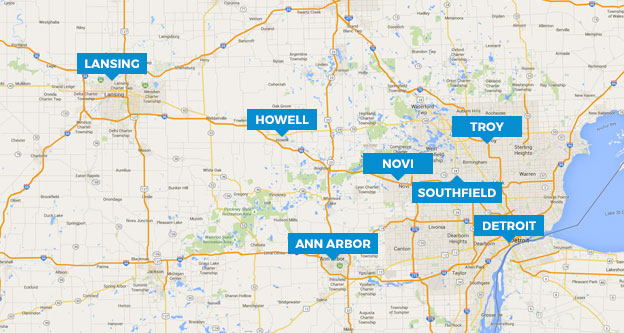Income Section of the 1040
After filing out the personal information section on the 1040 it is time for the income section of the 1040. For lines 7 through 9 there are multiple documents and forms that help to fill out the line amounts. Some of the different documents that an individual could obtain are W-2, 1099-INT, 1099-OID, and 1099-DIV. A form that might also be needed to help fill out the 1040 lines 8 and 9 is Schedule B.
Line 7: Wages, Salaries, Tips, Etc.
When looking at your W-2 at the end of the year it is important to know what numbers to use on the tax return. Box 1 on the W-2 is your wages. This number goes on line 7 of your 1040. If you have multiple W-2s it is important to add all the numbers found in box 1 on the W-2. More of the W-2 is used later on the 1040, but only box 1 is used on line 7 for the 1040.
It is also important to make sure there is a copy of all the W-2s attached to the 1040 before filing the return.
Schedule B
For lines 8 and 9 on the 1040 it is possible that a Schedule B is needed to also be filed. Schedule B is the Interest and Ordinary Dividends form. The form is easy to fill out and is separated into 3 parts. Part 1-Interest, Part 2-Ordinary Dividends, and Part 3-Foreign Accounts and Trusts. For line 8, only Part 1 will be used, and for line 9 only Part 2 will be used.
These are only if Schedule B is needed. Some of the different reasons a schedule B is required are:
- Income over $1,500 of taxable interest or ordinary dividends.
- Received interest from a seller-financed mortgage and the buyer used the property as a personal residence.
- Had accrued interest from a bond.
- You are reporting a lesser income than the amount shown on Forms 1099-OID and 1099-INT.
- Having received interest or ordinary dividends as a nominee.
- A nominee, in this case, is an individual or company whose name is given as having title to a stock, real estate, etc., but who is not the actual owner.
- You had a financial interest in an account in a foreign country or you received a distribution from a foreign trust.
Line 8a: Taxable Interest
If you receive a 1099-INT or a 1099-OID at the end of the year, then you probably have some taxable interest.
On Form 1099-INT Box 1: Interest Income is the most common box filled out for individuals. This amount would be put on Line 8a on the 1040. Also Box 3: Interest on U.S. Savings Bonds and Treas. Obligations would go onto line 8a.
On Form 1099-OID boxes 1 and 2 are the interest income used for line 8a on the 1040.
Line 8b: Tax-Exempt Interest
Similar to Taxable Interest, on Form 1099-INT there is a box for tax-exempt interest, this is box 8 on the 1099-INT. This number flows though to line 8b on the 1040. This income can be from tax-free securities such as municipal bonds.
On the 1099-OID form, there is a box for non-taxable interest as well. Box 11- Tax-exempt OID, this box will also go onto line 8b along with the interest income from any 1099-INT that is non-taxable.
This number does not affect the individuals AGI. However, the tax-exempt interest helps to determine the taxable amount of social security benefits.
Any interest that is reported on line 8b also must not be recorded on line 8a. Make sure the two lines do not have crossing-over numbers. There is no interest amount that is both taxable and non-taxable.
Line 9a: Ordinary Dividends
What is a dividend? A dividend is an amount of money paid to shareholders of a company. Dividends are typically paid quarterly and come out of the profits of the business.
Another form you might receive at the end of the year is a 1099-DIV. Box 1 on the 1099 is the number that is put on line 9a for ordinary dividends.
Line 9b: Qualified Dividends
When you receive a 1099-DIV box 2 has the Qualified Dividends amount. This amount goes on line 9b of the 1040.
If you have more than one 1099-Div make sure all of the box 1’s are added to go on line 9a and all of the box 2’s are added for line 9b.





